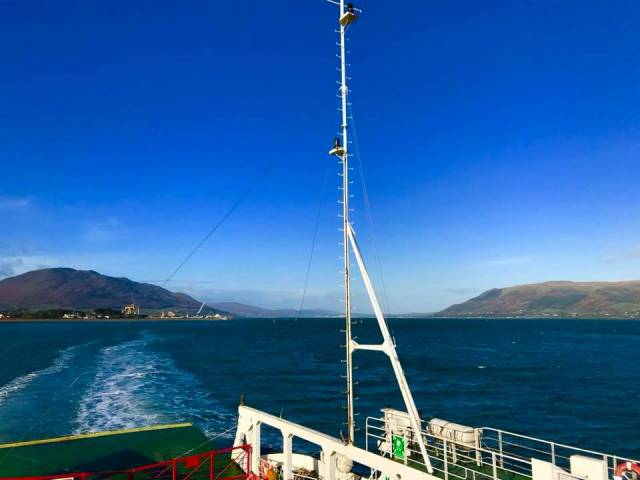#FerryNews - Aisling Gabrielle, the ro-ro vessel that launched the first ever Carlingford Lough ferry service last year departed Arklow Port this morning for dry-docking purposes, writes Jehan Ashmore.
The 44-vehicle Aisling Gabrielle opened the new cross-border service linking Greenore Co. Louth and Greencastle, Co. Down last summer, saving considerably mileage and journey times. A relief ferry, Frazer Mariner since the weekend maintains the 20 minute crossings. The service also generated new tourism potential and economic benefits for communities on both shores of the lough.
As for Aisling Gabrielle, a departure took place from nearby Carlingford Pier yesterday and which led to an arrival in Arklow Port mid-afternoon. The en-route call was to load bunkers and a crew rest overnight, with the ferry moored alongside the North Quay.
The same process took place in Wicklow Port last year where Afloat reported of the repositioning voyage of the former Foyle Venture. The ferry had emerged fresh from drydocking in New Ross complete with name change and corporate livery in advance of the new service.
While Aisling Gabrielle is off service for scheduled annual drydocking maintenance, this again sees the return of the UK built ferry to the Wexford Boatyard on the banks of the River Barrow.
As the name suggests, Frazer Mariner is this also operated by the Frazer Ferries Group. The Limerick based company opened the new Scenic Carlingford Ferry service as well as to the re-opening last year of the Lough Foyle service.
Likewise the north-western service is branded similarly as Scenic Lough Ferry, though the Greencastle, Co. Donegal-Magilligan, Co. Derry service is seasonal-only, April to September.
Last year, Aisling Gabrielle also carried out relief crossings for the Group's Waterford estuary service which link's Passage East, Co. Waterford and Ballyhack, Co. Wexford.
The route operated by the 28-vehicle F.B.D. Dunbrody along with the Passage East Ferry Co where acquired by the Group in 2016. The operation continues to trade under the previous name.
It remains to be seen if Aisling Gabrielle during its south-east call will also lead the ferry to relieve on the Passage East service as was the case last year.
































































